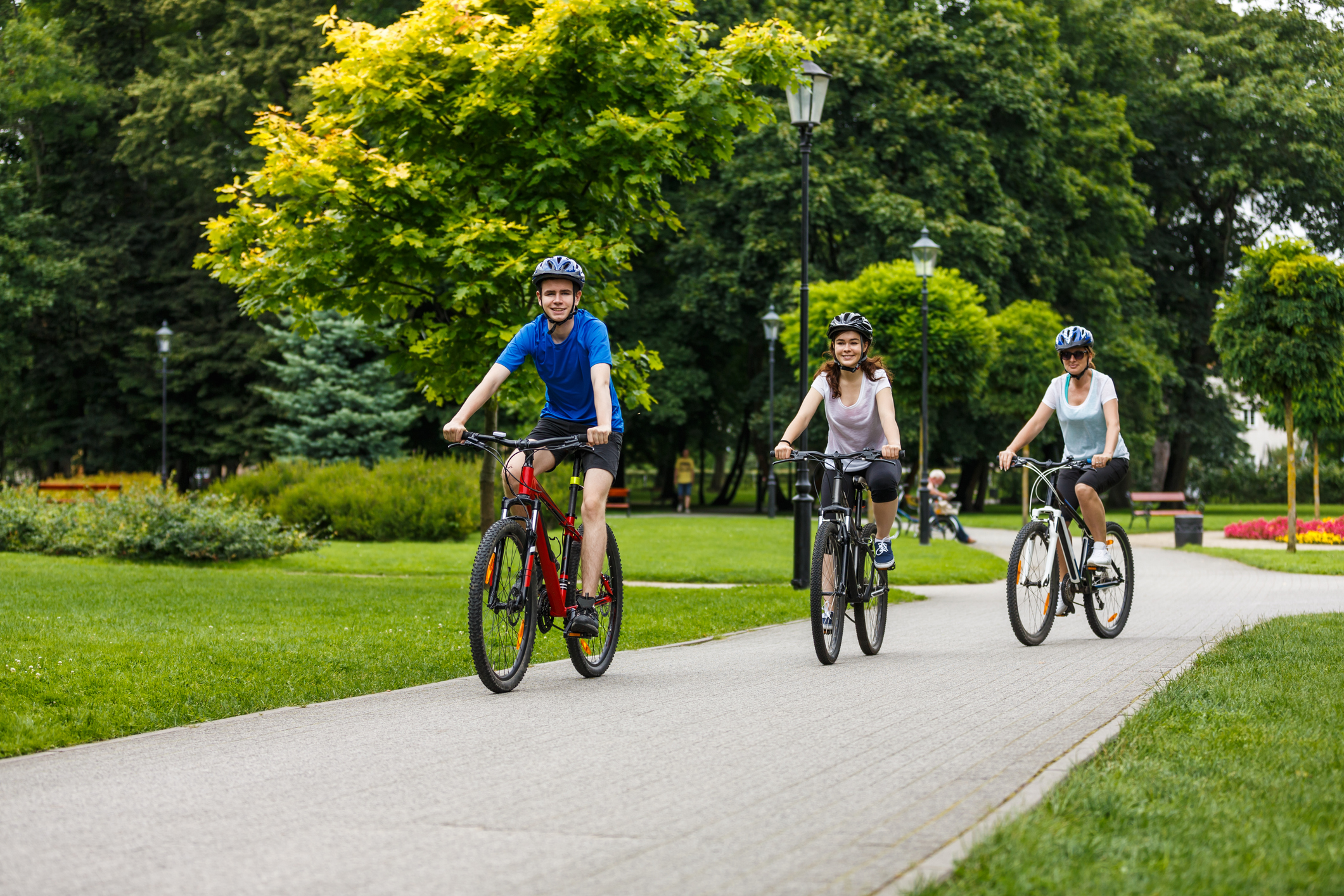May is Active Transportation Month, a time to get outside — an experience enhanced by walking, riding or rolling rather than driving a vehicle. The health benefits of incorporating physical activity into one’s daily routines, whether during our commute, running errands or simply for leisure, have been extensively reported. These benefits span across cardiovascular, metabolic, psychological and social realms, quantified through various metrics such as blood lipids, blood glucose, heart rate, steps per day, body composition and energy expenditure. Moreover, the psychological boost and social connections fostered by such activities contribute to enhanced confidence, overall well-being and happiness.
Venturing outdoors adds another layer of richness to the physical activity experience. We invigorate our bodies (e.g., increased DNA repair, reduced arterial stiffness) and rejuvenate our minds (e.g., increased expression of beta endorphins) and spirits (e.g., suppressed melatonin production and reduced symptoms of seasonal affective disorder). Sun exposure can also help regulate circadian rhythms, thereby improving sleep quality and energy levels.
However, active transportation is about more than just personal well-being: it is an act of reciprocity towards our planet. By opting for walking, biking or rolling, we actively reduce the accumulation of harmful greenhouse gasses and air pollutants emitted when traveling in gas-fueled vehicles. Transportation is a major contributor to greenhouse gas emissions, with many pollutants being released into the atmosphere. One study followed 2,000 urban residents who switched from driving a car to riding a bicycle for just one trip per day, a small lifestyle change that reduced their annual greenhouse gas emissions from 1.8 to 1.3 tons of CO2. The authors also suggested that if just 10% of the population made this small change in their travel behavior and reduced personal vehicle usage, greenhouse gas emissions from commuting and recreational trips would be reduced by 4% each year. While this alone will not stem the effects of humans on global climate, this alongside other efforts can have real and measurable positive effects at reducing our carbon footprint.
The good news is that the United States is following the lead of many European countries and embracing the shift towards a more walkable and bike-friendly infrastructure. With over 101 cities officially recognized for their walkable communities, 18,000 miles of bike trails and over 1,300 National Recreation Trails to hike, opportunities for active transportation abound. All of us should become familiar with our local infrastructure to make the most of walking, biking and hiking trails for commuting and leisure. The emerging popularity of electric bikes has added a novel element of fun and function as individuals of all fitness levels enjoy the possibility of exploring new places regardless of distance or hills with as little or as much effort as they desire.
As stakeholders in our communities, we have the power to effect positive change. If you identify areas for improvement in your community’s infrastructure, be proactive and contact your local city officials, particularly city planners. Your input could not only enhance active transportation options but also benefit local businesses and overall public health. Walkable communities tend to have higher housing values, boost local businesses, attract tourists and contribute to residents’ overall sense of well-being.
With May being a celebrated month for active transportation/commuting, let’s seize this opportunity to embrace active transportation, not just for our own well-being and happiness but also for the health of our communities and planet. Alongside local partners and global health organizations, we can create more vibrant, sustainable and connected neighborhoods, one step, pedal or roll at a time.

Helaine Alessio, PhD, FACSM, is professor and chair of the Department of Kinesiology, Nutrition, and Health at Miami University and past president of the ACSM Midwest Regional Chapter. She has received university commendations for teaching, research and service; has over 80 journal articles, book chapters, national and international peer reviewed blogs, infographics and NPR broadcasts; and has been funded by the National Institutes of Health (NIH), private foundations and corporations.

Alexander H.K. Montoye, PhD, FACSM, is a faculty member in Integrative Physiology and Health Science at Alma College in Michigan. Dr. Montoye’s research focus is on analysis and interpretation of accelerometer-based movement sensor data for outcomes including activity types and intensities. He also has keen personal interest in active transportation for personal and environmental health.

Kyle Timmerman, PhD, FACSM, is an associate professor in the Department of Kinesiology, Nutrition, and Health at Miami University. He is currently the president-elect of the ACSM Midwest Regional Chapter. His scholarship has focused on interactions among physical activity, inflammation, aging and biomarkers of disease. His research has been funded by the NIH and private organizations, and his scholarly works have been cited over 5,000 times.




